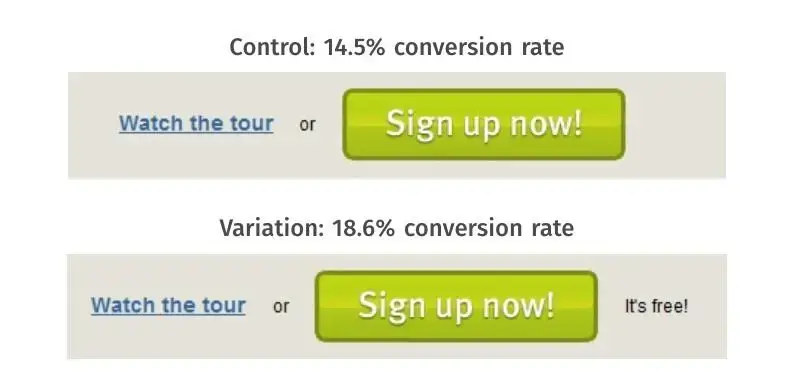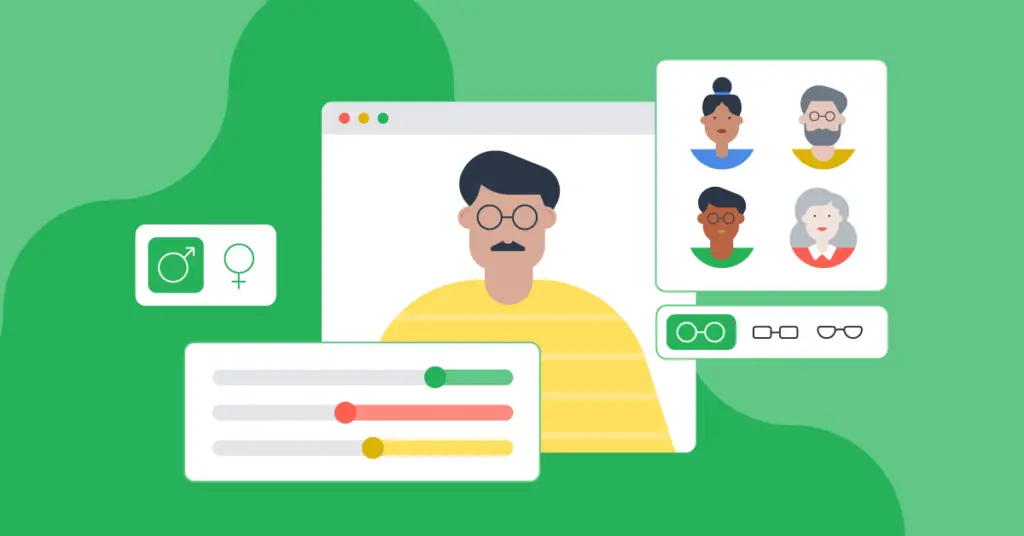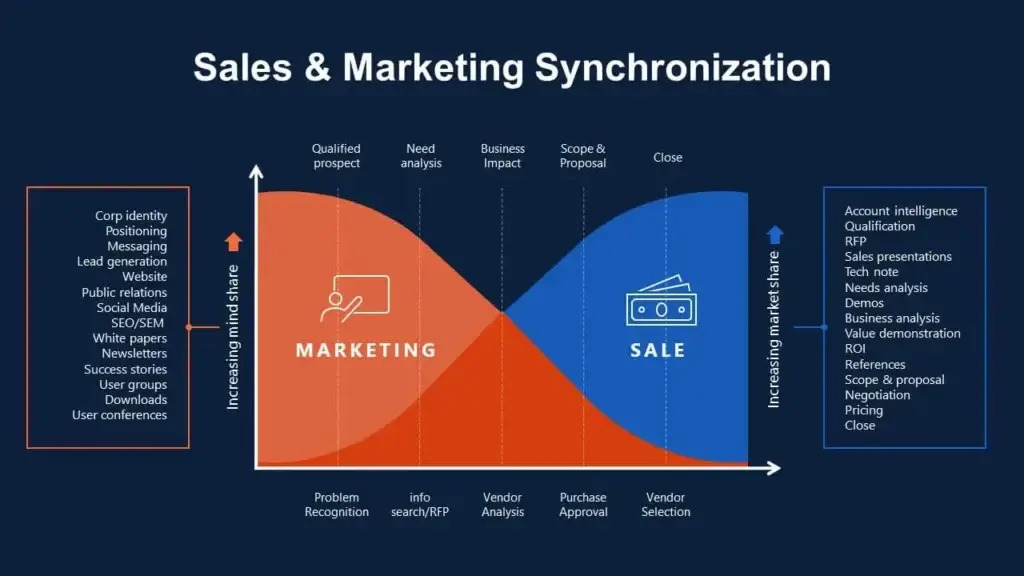You’ve heard about buyers’ or marketing personas, but do you know how to create one?
Today, consumers are more informed and choose a brand that resonates with their unique experiences.
This means you need to know your audience’s daily struggles, desires, and pain points to stand out from your competition and close the sale sooner.
In this guide, you’ll learn how to create a marketing persona and a free template to help you get started.
What is a marketing persona?
Marketing personas (a.k.a. buyers personas) are a semi-fictional representation of your ideal customer.
The reason you’d want to create one is to improve your sales conversion rates by aligning your sales and marketing to their current pain points, objections, and dream outcomes.
This means saying or writing the right words that relate to your ideal audience’s problems.

It’s entirely based on your experiences and data collected in sales calls, face-to-face interactions, and online research (surveying) over the years.
And creating a single persona will only solve some of your problems.
Depending on how different your products and services are, you’ll need to create more than one customer persona for each of your offerings.
Why is a marketing persona important?
Here are six (6) reasons why creating a marketing persona is essential to unlocking your online sales growth:
- It helps you to personalise your marketing campaigns to a specific group of buyers.
- It helps you prioritise your prospects’ needs, pains, and goals to help improve your messaging and sales empathy.
- It helps create relevant and targeted content for your blog, landing pages, emails, social media, and even newsletters.
- It helps optimise your media spending by who not to target, helping you to focus on the right people.
- It helps you create a more robust following and retain your customers for extended periods (decreasing churn).
- It’s a key component in managing your online reputation, as you’ll know what to post and share and what not to.
Characteristics of a good buyer persona
Creating a buyer’s persona can be exhausting. It’s easy to get lost in the data.
Here’s a checklist of what your persona needs to cover to keep you on the right track.
It needs to be helpful.
I’m not talking about creating this thing for it only to collect dust and not be used by your sales or marketing teams.
You need to think about all the information you’d find helpful in your marketing messaging and sales calls and reverse engineer your persona.
Our free template covers the main elements for any niche and industry.
It needs to be fluff-free.
While data is essential, it’s easy to get lost in information overload.
Your persona needs to have a singular focus. No fluff or data that’s interesting but isn’t actually helpful. Leave out unnecessary information and stay focused.
It needs to be accurate.
Your customer persona should hinge on real and fictional data based on actual experiences.
That said, no matter how experienced you are in your business, surveying customers and conducting interviews can go a long way.
How to create a marketing persona in 6 steps
Step 1: develop a list of questions
What problem is your ideal client trying to solve? It’s not always a straight answer; your client may not know either.
So you’ll need to dig deep, ask them the right questions and read between the lines to uncover their pain points.
It’s like a therapist asking “how did that make you feel?” or “why?” type questions.
Your main goal is to develop a list of questions to help you write more persuasive and relatable marketing content.
That’s all you need to do. That could mean asking current customers why they chose you over a competitor.
Or ask their opinion on X price or why they sought help.
Step 2: get a glimpse of their daily struggles
To empathise with your audience, you need to get some insight into their daily lives.
All you need is a simple 2-3 paragraph story on what a typical day looks like in their life.
The key here is to highlight the story based on the problem your brand solves.
By understanding their story intimately, you’ll create more personalised messaging, building trust, which will help you attract more sales.

Step 3: answer ALL of their objections
New prospects will never trust you, no matter how experienced and reputable you are.
It’s the harsh reality we must all face. Sometimes our egos can get in the way – especially if our portfolios are credible.
But the truth is, prospects just learning about you and your brand for the first time do not know you, like you or trust you (yet).
Ergo, they’ll have many objections to be answered before buying anything from you.
You need persuasive answers to their most common objections to avoid losing the sale, or they’ll find a comparable provider.
Here are a few generic examples:
- I can get a cheaper version somewhere else.
- You’re too expensive. Do you have payment plans?
- I want to avoid getting stuck in a contract.
- I need results. Do you have a guarantee?
Try to list all the most common objections your business faces and write a compelling response that combats each.
To get an idea of typical objections that you could use, try our free marketing persona template.
Step 4: jot down their desired outcomes
What are they trying to achieve? A lot of people confuse the desired outcome with the solution.
To clarify and make this as simple as possible, I want you to imagine someone running around, screaming with their hair on fire.
As crazy and comical as it sounds, please bear with me for a second.
When someone’s hair is literally on fire, their desired outcome is to ensure their hair is no longer on fire.

It’s that simple.
Yet most people might answer with “a bucket of water” or a “fire blanket”. But in reality, these are just solutions to the problem.
So for listing out your ideal audience’s desired outcomes, jot down around 3-9 desired outcomes that they have relative to the problem(s) your brand solves.
Step 5: brush up on tactical information.
As long as you have your persona’s story, pain points, desired outcomes, and objections, you don’t really need anything else.
That said, other things could persuade your decision-making when strategising your sales and marketing messaging.
These include:
- What other brands have your ideal audience tried before? These are usually direct competitors of yours.
- What kinds of media or tools does your ideal client typically consume day-to-day? These are usually just indicators of which potential marketing channels you could advertise on or relate to your audience with.
- What search queries does your target audience use on Google to find you? Think of all the possible keywords because later on, you can conduct SEO and Google Ads research to expand on these.
Take action: create your marketing persona
Now that you have all the information you need to create a helpful customer persona, it’s time to roll your sleeves and get into it.
I recommend blocking off around 20-30 minutes. But it all depends on how much info and experience you have on hand.

Download our free persona template here. Create your copy and fill in all the sections, that is:
- How their typical day looks like
- Pain points
- Goals and desired outcomes
- Major objections
- Other brands they have tried
- Media tools they consume
- How they use Google to find your services
What to do after you’ve made a marketing persona
Now that you know how to write a customer persona, the next thing to do is use it.
Here are a few ways how you can use your marketing persona:
- Send the persona to your sales and marketing teams to ensure everyone’s on the same page. That includes c-level (if appropriate).
- Revisit your website pages and get your marketing team to strategise new messaging and user journeys based on the persona.
- Revisit your sales scripts or talking points to align with the persona. Update your sales team on how to answer critical objections.
- Check and update your existing content. Sometimes changing a single word can make all the difference.
- Develop new marketing campaigns that align with your persona’s pain points.
You’ll be surprised how impactful a marketing persona can be to your company, especially when every department is in unison.
The outcome leads to more sales, better quality prospects, and predictable growth for your brand.

Recap on how to create a marketing persona
Before you go, here are a few tips to maximise the effectiveness of your marketing personas.
Be thorough in your research.
Whether interviewing your prospects or gathering information from your sales team, try to be thorough.
The better the questions, the better your answers will be. But don’t aim for perfection because you’ll refine your questions over time.
Involve everyone in your team.
It’s sometimes not enough to do the persona by yourself.
In a lot of cases, you should involve your front desk, sales and marketing teams, and your existing customers.
Each department will bring invaluable insights to the table which could make (or break) your messaging.
Don’t get lost in the gritty details.
Personas are never perfect on the first draft. It’s something you’ll continue to refine over your business’ lifecycle.
Therefore take your time with it. But don’t get lost in the weeds of information that’s not actionable.
Only focus on the information you can take action on, which moves the money needle for your business.
Don’t make it 100% fictional.
No matter how experienced you are, the persona must be based on REAL events and experiences.
Refrain from assuming you know your prospect’s problems if you’re fresh in the business. Ask them and let them tell you.
Update your marketing persona at least once a year.
Although death and taxes never change, trends, tastes, and perceptions do. So always try to make it an annual event where you and your team revisit your persona.
Buyer persona FAQs
Who at your company will buyer personas most benefit?
The people who will benefit from buyer personas at your company are anyone who works in Sales, Marketing, Customer Service and C-level.
Because it helps keep everyone aligned in the ideal customer profile that they’re serving. It uncovers insights into their main pain points, objections, and desired outcomes that they have around the problem your company is trying to solve.
How to write a marketing persona
Writing a marketing persona is a lot easier than you think. Here are 4 simple steps on how to write a marketing persona.
Step 1: Speak with your sales team or anyone on the front lines that are speaking to customers every day. Ask them questions about their pain points, dream outcomes and main objections.
Step 2: Use the persona template here which will save you a lot of time getting started. It will give you an idea of what questions to ask, where to start and how to structure it.
Step 3: Consolidate your responses and really empathise with the answers. Write your marketing persona in the first person so that you can capture the emotions of your ideal customer.
Step 4: Show the first draft to your sales and marketing teams. Get their input and keep improving it over time. A good marketing persona should be a living document that is regularly updated to reflect changes in the market and customer behaviour.
Why create a marketing persona?
Creating marketing personas help you to connect with your ideal customer on a much deeper level.
Taking the time to create a buyer persona will help your sales and marketing teams to relate to your target audience in a more meaningful way.
This means that you can create content and campaigns that are tailored to your audience’s problems and objections, helping you to increase your sales.
To put it simply, if you want to have the most impact on your marketing efforts, it pays to create personas.
Marketing personas are underrated – use them.
As you’ve discovered, marketing personas are one of the most powerful assets you can add to a brand.
Try not to get bogged down by unactionable information useless to your organisation.
If you get stuck trying to craft your persona, I recommend reaching out to a digital marketing consultant to shortcut the process.
Businesses are continually collecting data for the sake of it, losing sight of the real goal.
You can change that. Almost in an instant. Just by pivoting and focusing on what matters – the people in your market you’re serving.
I’ve made this free marketing persona available to the public because I believe it’s a sin to keep it behind some paywall.
It’s so powerful in the right hands, and I’m betting those hands are yours.

